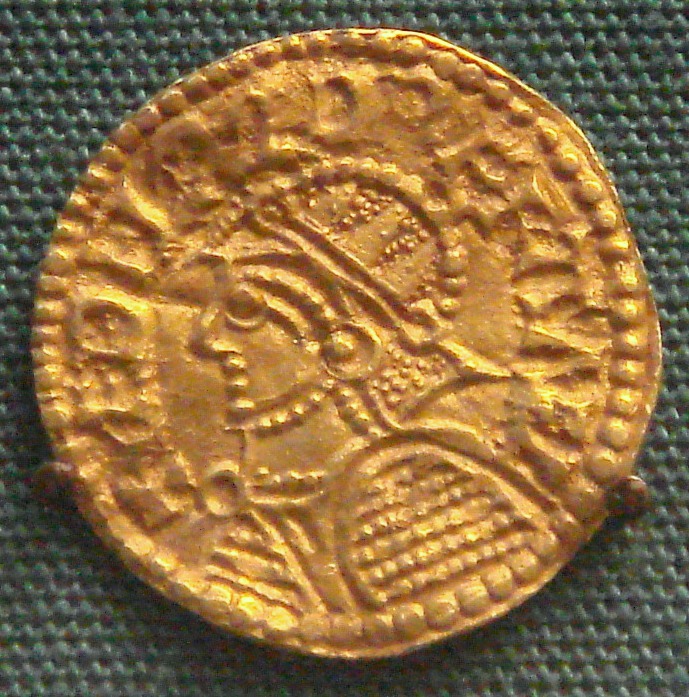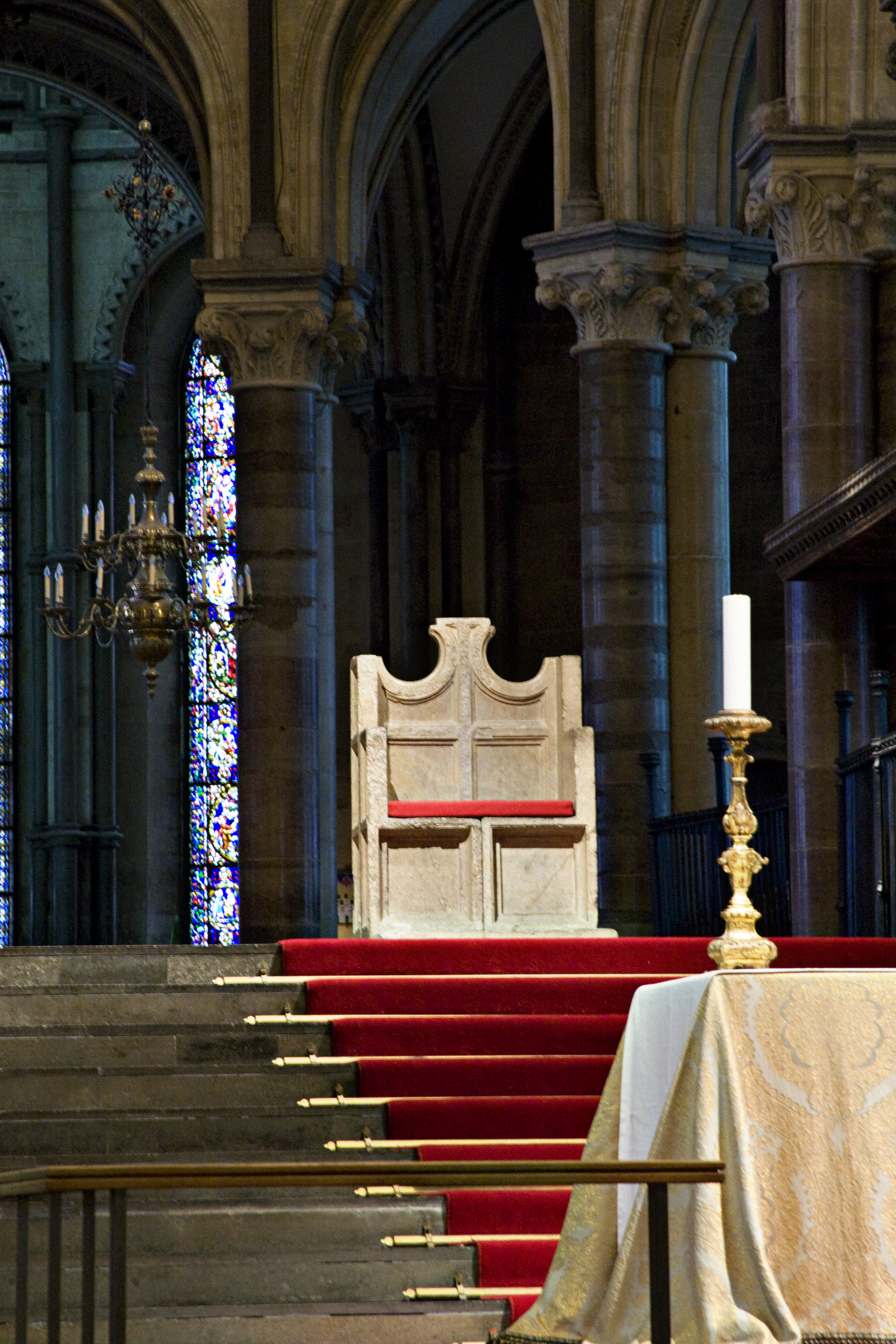|
Ælfric Of Abingdon
Ælfric of Abingdon (died 16 November 1005) was a late 10th-century Archbishop of Canterbury. He previously held the offices of abbot of St Albans Abbey and Bishop of Ramsbury, as well as likely being the abbot of Abingdon Abbey. After his election to Canterbury, he continued to hold the bishopric of Ramsbury along with the archbishopric of Canterbury until his death in 1005. Ælfric may have altered the composition of Canterbury's cathedral chapter by changing the clergy serving in the cathedral from secular clergy to monks. In his will he left a ship to King Æthelred II of England as well as more ships to other legatees. Early life Ælfric was the son of an earl of KentBarlow ''English Church 1000–1066'' p. 125 footnote 3 and became a monk of Abingdon Abbey in Berkshire (now Oxfordshire). He was very likely Abbot of AbingdonMason "Ælfric" ''Oxford Dictionary of National Biography'' before becoming Abbot of St Albans Abbey around 975,Knowles, et al. ''Heads of Religious ... [...More Info...] [...Related Items...] OR: [Wikipedia] [Google] [Baidu] [Amazon] |
Saint
In Christianity, Christian belief, a saint is a person who is recognized as having an exceptional degree of sanctification in Christianity, holiness, imitation of God, likeness, or closeness to God in Christianity, God. However, the use of the term ''saint'' depends on the context and Christian denomination, denomination. In Anglican Communion, Anglican, Oriental Orthodox, and Lutheranism, Lutheran doctrine, all of their faithful deceased in Heaven are considered to be saints, but a selected few are considered worthy of greater honor or emulation. Official Ecclesiastical polity, ecclesiastical recognition, and veneration, is conferred on some denominational saints through the process of canonization in the Catholic Church or glorification in the Eastern Orthodox Church after their approval. In many Protestant denominations, and following from Pauline usage, ''saint'' refers broadly to any holy Christian, without special recognition or selection. While the English word ''saint'' ... [...More Info...] [...Related Items...] OR: [Wikipedia] [Google] [Baidu] [Amazon] |
Æthelred The Unready
Æthelred II (,Different spellings of this king's name most commonly found in modern texts are "Ethelred" and "Æthelred" (or "Aethelred"), the latter being closer to the original Old English form . Compare the modern dialect word . ; ; 966 – 23 April 1016), known as Æthelred the Unready, was List of English monarchs, King of the English from 978 to 1013 and again from 1014 until his death in 1016. His epithet comes from the Old English word meaning "poorly advised"; it is a pun on his name, which means "well advised". Æthelred was the son of Edgar, King of England, King Edgar and Ælfthryth (wife of Edgar), Queen Ælfthryth. He came to the throne at about the age of 12, following the assassination of his elder half-brother, King Edward the Martyr. The chief characteristic of Æthelred's reign was conflict with the Danes (tribe), Danes. After several decades of relative peace, Danish raids on English territory began again in earnest in the 980s, becoming markedly more se ... [...More Info...] [...Related Items...] OR: [Wikipedia] [Google] [Baidu] [Amazon] |
Priesthood (Catholic Church)
The priesthood is the office of the ministers of religion, who have been commissioned ("ordained") with the holy orders of the Catholic Church. Technically, Bishop in the Catholic Church, bishops are a priestly order as well; however, in common English usage ''priest'' refers only to presbyters and pastors (parish priests). The church's doctrine also sometimes refers to all baptised members (inclusive of the laity) as the "priesthood of all believers#Catholic view, common priesthood", which can be confused with the minister of religion, ministerial priesthood of the ordained clergy. The church has different rules for priests in the Latin Church–the largest Catholic particular church–and in the 23 Eastern Catholic Churches. Notably, priests in the Latin Church must take a vow of celibacy, whereas most Eastern Catholic Churches permit married men to be ordained. Deacons are male and usually belong to the diocesan clergy, but, unlike almost all Latin Church (Western Catholic) p ... [...More Info...] [...Related Items...] OR: [Wikipedia] [Google] [Baidu] [Amazon] |
Christ Church, Canterbury
Canterbury Cathedral is the cathedral of the archbishop of Canterbury, the spiritual leader of the Church of England and symbolic leader of the worldwide Anglican Communion. Located in Canterbury, Kent, it is one of the oldest Christianity, Christian structures in England and forms part of a World Heritage Site. Its formal title is the Cathedral and Metropolitical Church of Christ, Canterbury. Founded in 597, the cathedral was completely rebuilt between 1070 and 1077. The east end was greatly enlarged at the beginning of the 12th century, and largely rebuilt in the Gothic style following a fire in 1174, with significant eastward extensions to accommodate the flow of pilgrims visiting the shrine of Thomas Becket, the archbishop who was murdered in the cathedral in 1170. The Norman nave and transepts survived until the late 14th century, when they were demolished to make way for the present structures. Before the English Reformation, the cathedral was part of a Benedictine monas ... [...More Info...] [...Related Items...] OR: [Wikipedia] [Google] [Baidu] [Amazon] |
Shaftesbury Abbey
Shaftesbury Abbey was an abbey that housed nuns in Shaftesbury, Dorset. It was founded in about 888, and Dissolution of the monasteries, dissolved in 1539 during the English Reformation by the order of Thomas Cromwell, minister to King Henry VIII. At the time it was the second-wealthiest nunnery in England, behind only Syon Abbey. History Alfred the Great founded the convent in about 888 and installed his daughter Æthelgifu, abbess of Shaftesbury, Æthelgifu as the first abbess. Ælfgifu of Shaftesbury, Ælfgifu, the wife of Alfred's grandson, King Edmund I, was buried at Shaftesbury and soon venerated as a saint, and she came to be regarded by the house as its true founder. The bones of St Edward the Martyr were translated from Wareham, Dorset, Wareham and received at the abbey with great ceremony. The Translation (relics), translation of the relics was overseen by Dunstan, St Dunstan and Ælfhere, Ealdorman of Mercia. This occurred in a great procession beginning on 13 Feb ... [...More Info...] [...Related Items...] OR: [Wikipedia] [Google] [Baidu] [Amazon] |
Edward The Martyr
Edward the Martyr ( – 18 March 978) was King of the English from 8 July 975 until he was killed in 978. He was the eldest son of King Edgar (r. 959–975). On Edgar's death, the succession to the throne was contested between Edward's supporters and those of his younger half-brother, the future King Æthelred the Unready. As they were both children, it is unlikely that they played an active role in the dispute, which was probably between rival family alliances. Edward's principal supporters were Dunstan, Archbishop of Canterbury, and Æthelwine, Ealdorman of East Anglia, while Æthelred was backed by his mother, Queen Ælfthryth and her friend Æthelwold, Bishop of Winchester. The dispute was quickly settled. Edward was chosen as king and Æthelred received the lands traditionally allocated to the king's eldest son in compensation. Edgar had been a strong and overbearing king and a supporter of the monastic reform movement. He had forced the lay nobility and secular ... [...More Info...] [...Related Items...] OR: [Wikipedia] [Google] [Baidu] [Amazon] |
Pallium
The pallium (derived from the Roman ''pallium'' or ''palla'', a woolen cloak; : pallia) is an ecclesiastical vestment in the Catholic Church, originally peculiar to the pope, but for many centuries bestowed by the Holy See upon metropolitan bishop, metropolitans and primate (bishop), primates as a symbol of their conferred Ecclesiastical jurisdiction, jurisdictional authorities; it remains a papal emblem. It is symbolic of the lamb which Jesus carries on his shoulders in artwork portraying him as the Good Shepherd. In its present (western) form, the pallium is a long and "three fingers broad" (narrow) white band adornment, woven from the wool of lambs raised by Trappist monks. It is donned by looping its middle around one's neck, resting upon the chasuble and two dependent lappets over one's shoulders with tail-ends (doubled) on the left with the front end crossing over the rear. When observed from the front or rear the pallium sports a stylistic letter 'y' (contrasting against a ... [...More Info...] [...Related Items...] OR: [Wikipedia] [Google] [Baidu] [Amazon] |
Pope Gregory V
Pope Gregory V (; c. 972 – 18 February 999), born Bruno of Carinthia, was the bishop of Rome and ruler of the Papal States from 3 May 996 to his death. A member of the Salian dynasty, he was made pope by his cousin, Emperor Otto III. Family Bruno was a son of Otto I, Duke of Carinthia, a member of the Salian dynasty who was a grandson of Otto I, Holy Roman Emperor, and his wife, Judith of Carinthia, most likely a member of the Luitpolding dynasty. He is the only pope who was born in modern Austria, and is sometimes referred to as "the first German pope" or as "the only Austrian pope;" German and Austrian identity was not formed at the time of Gregory's life. Papal election Bruno was the chaplain of his cousin, Emperor Otto III, who presented him as a candidate and arranged his election. Bruno was elected and succeeded John XV as pope, taking the name Gregory V to honour Pope Gregory the Great; he thus became the first pope to choose a regnal name for a reason other than ... [...More Info...] [...Related Items...] OR: [Wikipedia] [Google] [Baidu] [Amazon] |
Matthew Of Paris
Matthew Paris, also known as Matthew of Paris (; 1200 – 1259), was an English Benedictine monk, chronicler, artist in illuminated manuscripts, and cartographer who was based at St Albans Abbey in Hertfordshire. He authored a number of historical works, many of which he scribed and illuminated himself, typically in drawings partly coloured with watercolour washes, sometimes called "tinted drawings". Some were written in Latin, others in Anglo-Norman or French verse. He is sometimes confused with the nonexistent Matthew of Westminster. His is a renowned Medieval work, in many cases being a key source for mid-13th century Europe, partially due to his verbose insertion of personal opinions into his narrative and his use of sources such as records, letters, and conversations with witnesses to events including the English king Henry III, earl Richard of Cornwall, the Norwegian king Haakon IV, a number of English bishops, and many others. Modern historians recognise Pa ... [...More Info...] [...Related Items...] OR: [Wikipedia] [Google] [Baidu] [Amazon] |
Amesbury
Amesbury () is a town and civil parish in Wiltshire, England. It is known for the prehistoric monument of Stonehenge which is within the parish. The town is claimed to be the oldest occupied settlement in Great Britain, having been first settled around 8820 BC. The parish includes the hamlets of Ratfyn and West Amesbury, and part of Boscombe Down military airfield. Etymology The derivation of the name of the town is uncertain. It may derive from an Anglo-Saxon named ''Ambre'', or from the Old English ''amore-burh'' meaning 'fortification frequented by buntings or/and yellowhammers'. It has also been suggested that the name is derived from Ambrosius Aurelianus, leader of Romano-British resistance to Saxon invasions in the 5th century. Geography Amesbury is located in southern Wiltshire, north-northeast of Salisbury on the A345. It sits in the River Avon valley on the southern fringes of Salisbury Plain and has historically been considered an important river crossing area o ... [...More Info...] [...Related Items...] OR: [Wikipedia] [Google] [Baidu] [Amazon] |
Witenagemot
The witan () was the king's council in the Anglo-Saxon government of England from before the 7th century until the 11th century. It comprised important noblemen, including ealdormen, thegns, and bishops. Meetings of the witan were sometimes called the witenagemot. Its primary function was to advise the king on legislation, judicial cases, land transfers, and other matters of national importance. The witan may have elected new kings from among members of the ruling dynasty. After the Norman Conquest in 1066, these roles were performed by a similar council known as the curia regis. The witan is considered an ancestor of the Parliament of England. Before the 20th century, historians thought it had been a proto-parliament, an institution that was both democratic and representative. In the 20th century, historians shifted to emphasise the witan's ad hoc and essentially royal nature. Etymology The Old English word () described the counsellors of Anglo-Saxon kings. At the sam ... [...More Info...] [...Related Items...] OR: [Wikipedia] [Google] [Baidu] [Amazon] |
Translation (ecclesiastical)
Translation is the transfer of a bishop from one episcopal see to another. The word is from the Latin ', meaning "carry across" (another religious meaning of the term is the translation of relics). This can be: *From one diocesan bishopric to another bishopric which is perceived as more important (or the bishop prefers as his or her see) *From suffragan bishop status to diocesan bishop *From coadjutor bishop to diocesan bishop *From one country's episcopate to another *From diocesan bishop to archbishop In Christian denominations, an archbishop is a bishop of higher rank or office. In most cases, such as the Catholic Church, there are many archbishops who either have jurisdiction over an ecclesiastical province in addition to their own archdi ... References Anglicanism Episcopacy in the Catholic Church Christian terminology {{christianity-stub ... [...More Info...] [...Related Items...] OR: [Wikipedia] [Google] [Baidu] [Amazon] |






